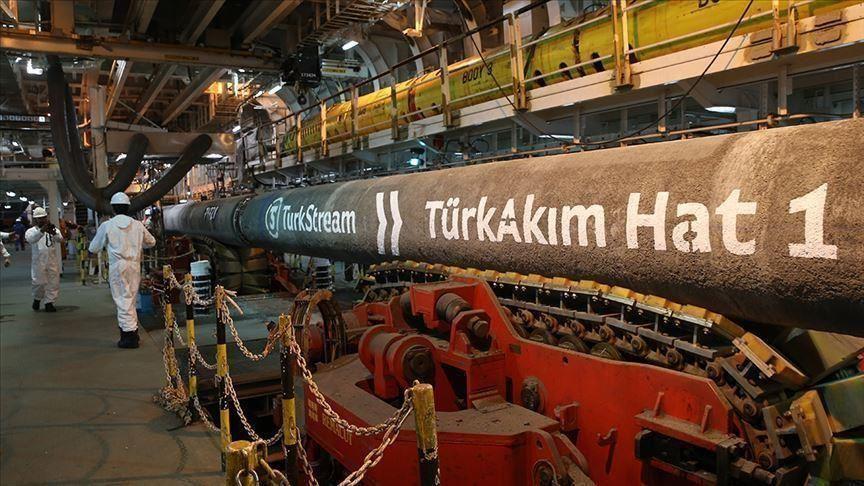Oct. 10 marks the fourth anniversary of the signing of the intergovernmental agreement for the TurkStream natural gas pipeline project by the energy ministers of Russia and Turkey.
Oleg Aksyutin, the deputy chairman of the project’s main partner company, Gazprom and CEO of the TurkStream project company told Anadolu Agency of the challenges the company faced with the project to bring energy supply security to Turkey and the Balkans.
He described TurkStream as a daring project, which had a strict schedule and numerous technical challenges in its implementation in the Black Sea at depths greater than 2 kilometers.
TurkStream is the biggest-diameter offshore gas pipeline in the world laid at extreme depths of 2,200 meters and its deep-sea pipelaying was carried out by the world's biggest construction vessel, aptly called the Pioneering Spirit.
This colossal vessel, corresponding to the size of six Boeing 747s, can lift the equivalent of 2.5 Eiffel Towers.
It laid pipes one at a time every eight minutes for the project even in the event of massive waves.
During the pipelaying work, the captain expertly navigated the vessel to avoid the newly discovered aircraft wrecks and archeological pieces of interest on the seabed while ensuring that no undue delays were made in their work.
“Our expert teams worked around the clock to complete the project punctually and flawlessly and succeeded, also thanks to the support of the Turkish and Russian governments and people,' he said.
Turkish President Recep Tayyip Erdogan and his Russian counterpart Vladimir Putin inaugurated the TurkStream pipeline project on Jan. 8.
Commercial supplies via the gas pipeline commenced on Jan. 1, 2020.
TurkStream consists of two 930-kilometer-long offshore lines stretching from Russia to Turkey across the Black Sea, and two separate onshore lines at lengths of 142 and 70 kilometers.
The project has a total capacity of 31.5 billion cubic meters (bcm). The first line with a capacity of 15.75 bcm is designated for supplies to Turkey's domestic customers, and the second line, also with a 15.75 bcm capacity, carries Russian gas further to Europe through Bulgaria.
Gazprom-owned South Stream company constructed the project's gas receiving terminal in Kırklareli’s Kiyikoy, Turkey's main onshore section located on the Black Sea coast in the country’s northwestern region.
By Murat Temizer
Anadolu Agency
energy@aa.com.tr


